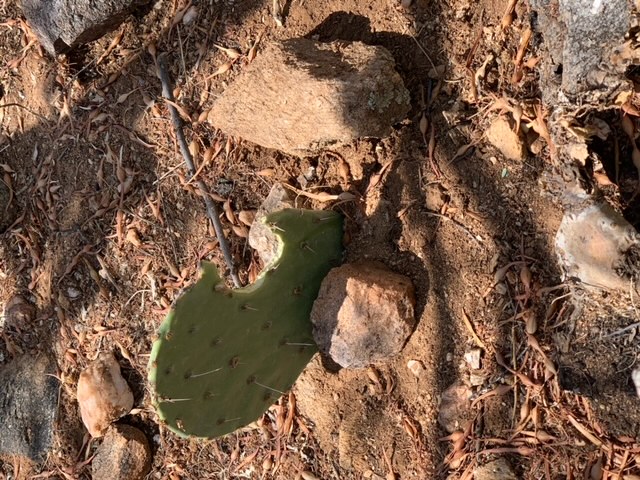
One surveying a desert full of prickly pear cacti will quickly notice that, despite their armamentarium, many are missing a chunk, leaving a defect that looks for all the world like something took a bite, thorns and all. Turns out that’s the case. The attached photo taken in our yard in Tucson illustrates the result. Which animals would do such a counterintuitive thing you ask? In fact, nearly all desert animals, from the larger such as javelinas and deer, through the smaller including rabbits, lizards and all the many desert rodents are perfectly happy to chow down on these cacti. As if that’s not enough, there is also something called a prickly pear bug which also dines on the cactus. Water makes up over 75% of the pads’ tissues so the happy desert diner gets hydration along with some nutrition.
I can attest to the cactus pads being fully armed with thorns of all sizes. I don’t know how these animals navigate around or possible consume the thorns but they manage. A fascinating video you might want to check out on the internet shows a camel chewing and eating a pad, thorns and all. Amazing. You would predict a mouth lined with those prickly things.
The prickly pear pads are surprisingly heavy due to all the water they contain. They must have a reasonably nice flavor as the pads, known as nopales, can be cooked and are a common dish in southwestern fare although the thorns are—thankfully—removed before cooking and eating.
